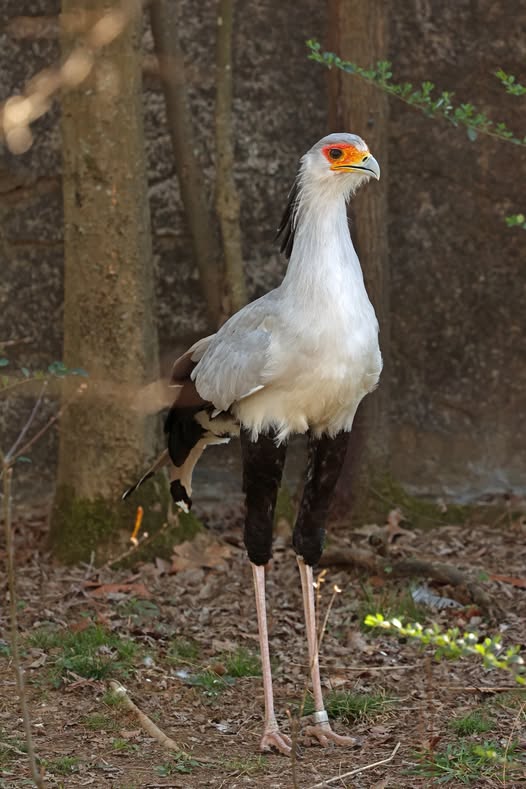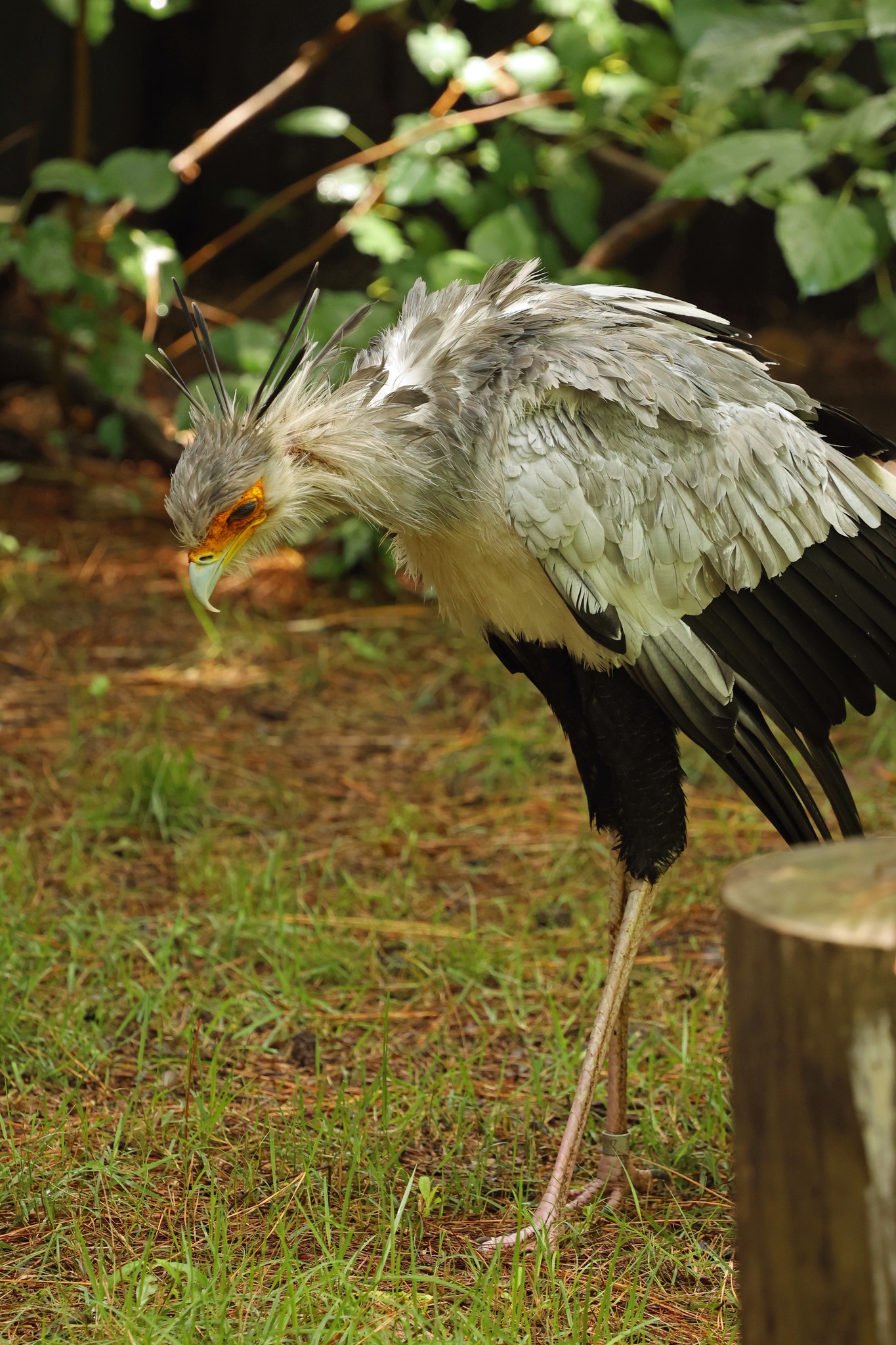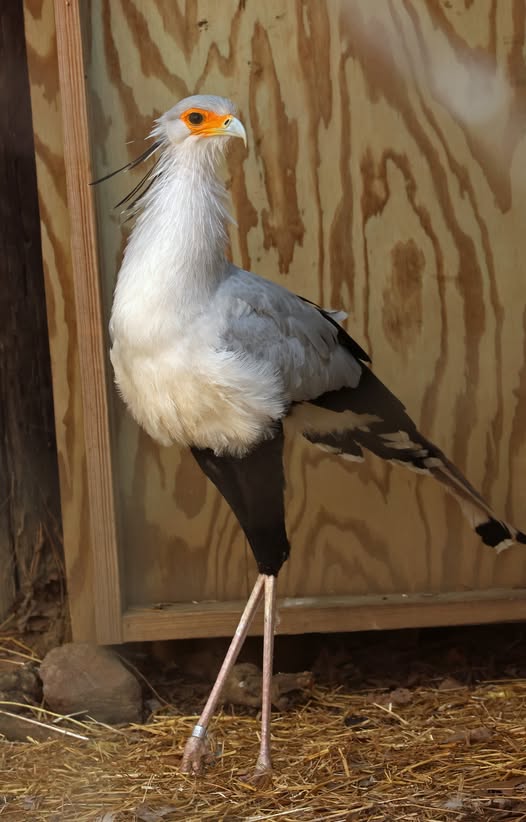Birds of Prey
Birds of prey, also known as raptors, are a captivating group of avian predators celebrated for their exceptional hunting skills and vital role in maintaining ecological balance. Species such as eagles, hawks, owls, and falcons are equipped with keen eyesight, powerful talons, and sharp beaks, making them highly efficient at controlling populations of smaller animals, which is crucial for the health of their ecosystems. Discover the fascinating birds of prey you can encounter at the Little Rock Zoo below.



Secretary Bird
Secretary birds (Sagittarius serpentarius) are striking birds of prey native to the open grasslands and savannas of sub-Saharan Africa. Known for their long legs and distinctive appearance, these birds stand out with their unique blend of raptor and crane-like features. They have a mostly grey body, black feathers on their thighs and wings, and a head adorned with long, quill-like feathers that resemble quill pens, which is how they earned their name.
Unlike most birds of prey that hunt from the air, secretary birds are terrestrial hunters, spending much of their time on the ground. They are renowned for their ability to hunt and kill snakes, using their strong legs and feet to deliver powerful kicks. Their diet also includes insects, small mammals, and other reptiles.
Secretary birds are skilled fliers despite their long legs and can soar to great heights. They build large nests in the tops of thorny acacia trees, providing protection for their young. These majestic birds play a crucial role in their ecosystem by controlling the populations of small animals and pests.
Here at the Little Rock Zoo you can see the Secretary Bird in the overlook near the Maned Wolves just outside the Cheetah Outpost.
- Secretary birds and caracaras are the only terrestrial birds of prey, hunting for their food on foot.
- The secretary bird has the longest legs of any bird of prey.
- Another name for this bird is the marching eagle, because of the way it lifts its legs as it walks.
At this time, the secretary bird is common over much of its range and is protected in many African countries. However, habitat loss and deforestation could affect its future.
Photos by Karen Caster



